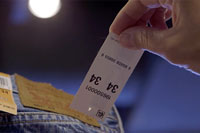 Today we are living in a data-driven retail world. A world where a network of physical objects, such as devices, vehicles, buildings, etc, can be embedded with technology that enables them to communicate, collect and exchange data. This next wave of Internet development in which everyday objects have network connectivity ” allowing them to send and receive data ” is commonly called the Internet of Things (IoT).
Today we are living in a data-driven retail world. A world where a network of physical objects, such as devices, vehicles, buildings, etc, can be embedded with technology that enables them to communicate, collect and exchange data. This next wave of Internet development in which everyday objects have network connectivity ” allowing them to send and receive data ” is commonly called the Internet of Things (IoT).
Retailers are very well positioned to benefit from the IoT. In fact, some of the solutions we see in IoT today have been a part of the retail market for years. For example, RFID tags were patented in the 1970’s and have been used in the retailer supply chain since that time. But recent advances in embedded sensors are changing the way retailers manage merchandise and learn about their customers. By combining RFID tags with a smart platform, brick-and-mortar retail stores can streamline inventory tracking, collect in-depth intelligence on customer behavior and preferences and dramatically reduce losses from misplaced items and inventory shrink. Other benefits of implementing RFID tags with real-time analytics is the ability to:
- Track exact inventory with near-100 percent accuracy to meet fluctuating in-store demand,
- Reduce losses from overstocked, out-of-stock, or misplaced items and inventory shrink,
- Get replenishment alerts when inventories are low at designated locations in the store,
- Maintain inventory in the appropriate locations, understand what items are touched, tried on, and eventually sold, and
- Increase salesforce efficiency and effectiveness while protecting customer privacy.
 But retailers are also living in a world where speed matters when trying to quickly understand the patterns hidden among millions of daily transactions across many channels ” and give shoppers what they want, when and where they want it. The challenge is often not the availability of data, but rather that most retailers today lack technology that can deliver and react to this data on a real-time basis. The ability to make real-time business decisions can improve the bottom line for retailers, but this ability requires real-time data and analytics.
But retailers are also living in a world where speed matters when trying to quickly understand the patterns hidden among millions of daily transactions across many channels ” and give shoppers what they want, when and where they want it. The challenge is often not the availability of data, but rather that most retailers today lack technology that can deliver and react to this data on a real-time basis. The ability to make real-time business decisions can improve the bottom line for retailers, but this ability requires real-time data and analytics.
So why are retailers slow to invest in these technologies? Because it’s a major investment for the average retailer, and the pace of change is overwhelming. Another challenge is understanding the value of IoT and knowing where and when to consider an IoT implementation. The key is to take advantage of real-time analytics by consolidating data analysis onto a single real-time analytics platform and obtaining a 360-degree view of customers, supply chain and channel partners. This holistic view requires a significant acquisition, upgrade and/or integration of numerous technologies “ including IoT technologies. This has led to a huge growth opportunity to Value Added Resellers (VARs).
Is the IoT all hype? Retailers continue to deal with the pain points of inventory distortion and an uneven customer experience. In a recent 451 Research survey of 200 SMBs retailers, 15% of responding SMBs indicated that they have already deployed one or more IoT initiatives while another two-thirds are planning or considering an IoT deployment. Considering that 75% of the SMB retailers surveyed by 451 Research either have or are planning on deploying IoT technologies, it’s tough to argue that “IoT is all hype.
How big is this opportunity?
Industry research firms IDC and Gartner forecast IoT growing across multiple industries. Research firm IDC estimates that global spending on IoT devices and services will rise from $656 billion in 2014 to $1.7 trillion in 2020. That growth is expected to be fueled by growth in devices, connectivity solutions, and IT services. IDC believes that devices, which include modules and sensors, will account for 32% of that total. That growth will boost demand for “purpose-built IoT platforms, application software, and cloud-based “as a service solutions for device management. Gartner, Inc. forecasts that 6.4 billion connected things will be in use worldwide in 2016, up 30 percent from 2015, and will reach 20.8 billion by 2020. In 2016, 5.5 million new things will get connected every day.
To their credit, many top VARs and distributors are already engaged in or pursuing IoT opportunities. This IoT activity can generate additional business in cloud computing, data analytics, mobility and security. Both enterprise and SMB retailers can realize the value of implementing IoT into their businesses. But successful VARs must be able to anticipate and address questions on the value and cost of IoT technologies. Becoming educated on IoT will be instrumental in helping VARs lead the buying process and ongoing support with retailers.
In today’s market, we are seeing IoT growth and revenue opportunities across all markets. Retailers are implementing IoT solutions to help solve inventory distortion, increase customer satisfaction and brand awareness. If they are not already, VARs who have areas of expertise in inventory tracking and management, payment processing and supply management should be engaged with their retailers in exploring IoT implementations. For VARs without such expertise, there is an opportunity, but these VARs must become educated and position their businesses to take advantage of the IoT opportunity.
Vanessa Foden is Chief of Staff to the VP and GM of the Retail Solutions Division at Intel Corporation. Kevin Kogler is Founder & President of MicroBiz POS




